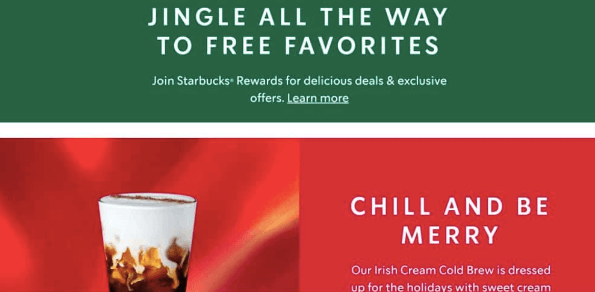Your brand is far from a one-time concept, it is not something to build, only to leave by the wayside once your company is launched… the brand is a critical aspect of any company, making it essential to inspect and update your branding from time to time to keep up with the latest industry trends and consumer demands.
Brand leaders understand the importance of keeping up to date with the ever-evolving trends and adopting new methods to market their products and services to their target audience. In this article, we’ll go over the top branding trends for 2022 that are likely to have an impact on your digital marketing goals, as well as how to make them work for you.
1. Adaptable Branding
If you want your company to go thrive and expand beyond your immediate area, you need to promote it across as many channels as possible. This means having a website and an active presence on social media networks. This makes it essential that your brand logo can be tweaked or scaled to suit a variety of uses and channels
For example, you can decide to use your logo in its full glory on your website, then use a streamlined icon for your branded products and an even simpler logo for your social media profiles.
Logos that are designed to easily shapeshift enables you to maintain consistency, while also providing your audience with visual variety, regardless of the platform or layout your logo is viewed on. People can see any of the variations and instantly recognize your brand.

2. Data-Driven Branding
Consumers create a vast amount of data each and every day, in the modern age of networking and digital commerce, how companies make use of this data is crucial. It can be instrumental in understanding your customer’s relationship with your brand…
Analytics and business intelligence tools to gather, manage and analyse this data for you, and you can use it to gain consumer insights, which in turn will aid your product strategy and market research. It is proven that data-backed decisions to speed up product development.
You can also use it to refine operational efficiencies, enhance customer experience, increase marketing ROI, and make your brand stand out from the competition.
Take Starbucks as an example, they use market research and the data it gathers from research firms, its franchisees, and social listening activities to inform its branding and marketing efforts, stay updated on trends, and increase customer loyalty.
Combining data-driven branding strategies with a customer-centred approach to your product development is a surefire way to give your business the best possible footing going forward.

3. Branding without your brand name
Adverts are seemingly everywhere now and have become a part of the fabric of the modern era. But this does not mean that consumers are not sick and tired of having them shoved in their faces every minute of the day, and down every available channel…
Customers no longer care about brands as much as they do about finding practical solutions to their problems.
Brands must find a way to market themselves without being so obvious, without using their logos or brand names. This means leveraging their unique value propositions to establish and strengthen their brand identity, rather than relying on traditional brand elements.
What are your selling points? Do you have flagship services or products that you can use to brand yourself?
Try creating a blog forum and focus on providing valuable resources and insightful, interesting content that people care about. Ask yourself, so what? And why should anyone care? The likelihood is that people will enjoy it, digest it, and share it, as it is information which they care about, rather than just an advert saying how great your business is, or how amazing your products are.
At the same time, they will subconsciously associate your company with the blog. When they need an actual product or service that’s related to your offerings, they will come to you because they already trust you and know you’ve got their best interests at heart.
4. Typographic Branding
Bold, eccentric, experimental, and stylish typefaces full of character are in, and brands will be or should be, experimenting with more of them! It’s time to say goodbye to the old and safe, and hello to the new.
Get funky, take an edgy turn, find out what works. Add 3D elements, variable styling animation, illustrations, and colours to your brand fonts to make them more vibrant and interesting.
Consider the text in your logos as a chance to show off the personality of your company, and to look original. It no longer needs to be words with the sole purpose of supporting the image. Now they can be the focal point too.
The text in your logos and brand visuals doesn’t have to be words that simply support the image; they can be a point of focus too. Consider them a chance to make your logo look original and show off your company’s personality.
Feel free to tweak your typography’s positions, order, and even letter size. There’s no standard way to design a logo. All that matters is that your typography is legible.
Take Nike’s recent “Play New” campaign as an example. It puts a contemporary twist on the brand’s typography through sharp contrasting shapes, radiant colours, and beautiful flowing forms.

5. Simple, Bold, Branding
If you’re designing your brand logo now, or feel it’s time to refresh your existing logo, aim for a design that’s comfortable, aesthetically pleasing, and practical.
Ideally, your logo needs to be easily recognisable, something that can be replicated or used on a wide variety of platforms and objects.
The truth is you don’t have to do too much to make your logos stand out. The beauty of gorgeous lettering and simple logotypes is hard to beat. Find a font style and logotype that’s easy to understand, and importantly, suits the personality of your brand. Drop the embellishments and pivot to logos with simple or no imagery and clean lines.

6. Brand Assets
Brand awareness goes a long way past simple brand logos. Colours, fonts, slogans, patterns, icons, imagery and packaging are all elements that define the look and feel of your brand. If you are looking for a way to successfully distinguish your brand from the competition, be sure that your brand is consistent throughout everything you do, not just your brand assets.
Examples of brands that have successfully achieved brand recognition with brand assets are Dunkin Donuts with their pink and orange letters and of course McDonald’s famous yellow arch. These are perfect examples of how colours are powerful brand assets. Nike’s signature tick, or the tell-tell Adidas pattern, and of course, the famous apple icon by Apple.
Such recognition does not happen overnight, years of consistency within the brand have led to almost instantaneous recognition, worldwide, both in and out of context.
Summary
The brand-to-consumer relationships are becoming less and less about transactions and more about connections. Branding has evolved past simply a look or style, now it must invoke a sense of trust, emotion and loyalty. A brand needs to stand for something. Standing for how you act, and the experiences you provide…
To increase commercial success and improve your brand experience in the coming year, don’t shy away from implementing these branding trends alongside your tried and true branding strategies to help your business achieve its long-term goals.


